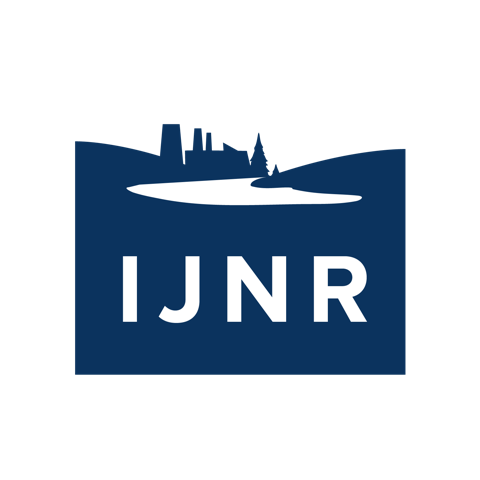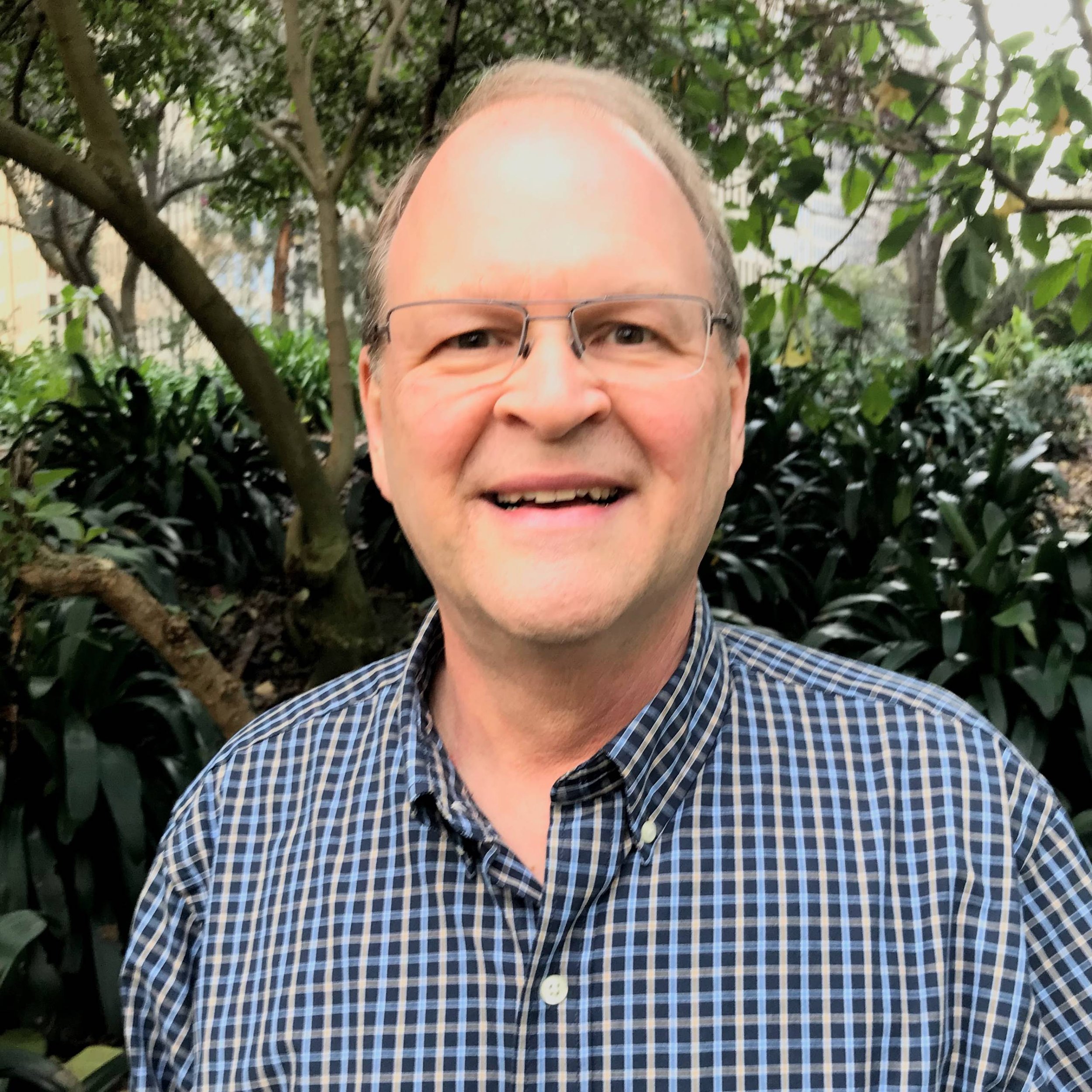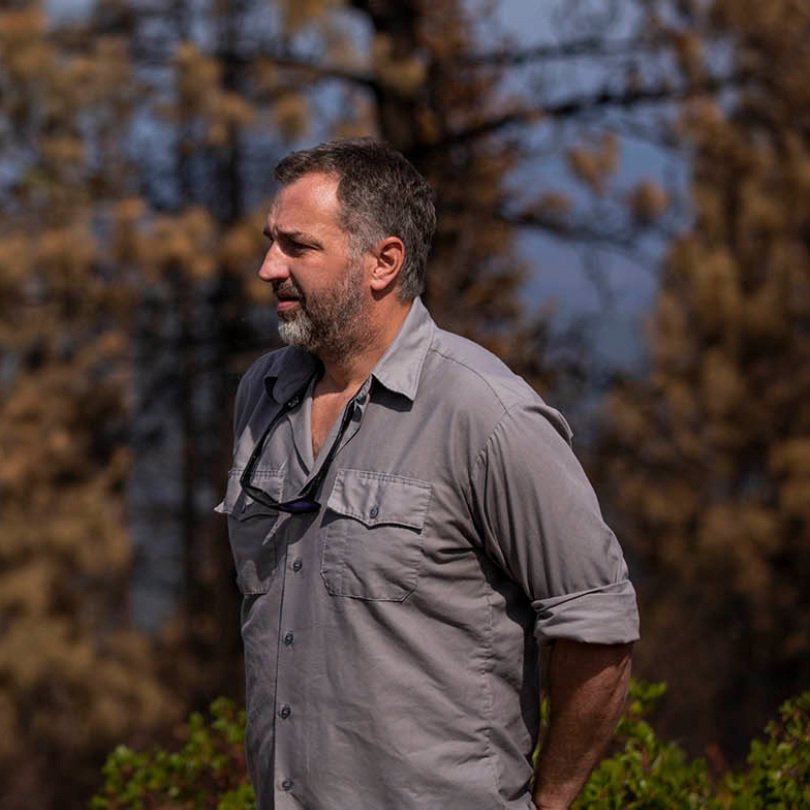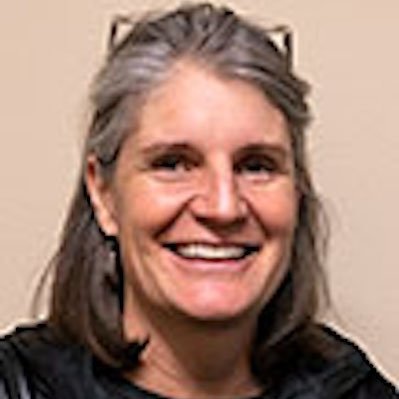Klamath River
Institute
Itinerary
Saturday, September 16
6 p.m. - Opening Night Dinner: Welcome, Orientation + Overview
Adam Hinterthuer
Director of Programs, Institute for Journalism & Natural Resources
Dave Spratt
Chief Executive Officer, Institute for Journalism & Natural Resources
Miacel Spotted Elk
Program Assistant, Institute for Journalism & Natural Resources
Newsgathering in New Places: A Primer for Reporting in Rural and Indigenous Communities
After dinner, fellows settle in for a discussion about what can be one of the trickiest parts of the job – reporting with sensitivity and complexity on people and places in far-flung parts of the world. How can we, as journalists, build relationships with sources and a solid understanding of complex issues in short visits to communities we’re not from? Should we? We’ll start a discussion that will hopefully inform our time together this week and help ensure that our work accurately and respectfully tells the stories of people in the Klamath Basin. We’ll start with a conversation about rural farm towns and then turn to a discussion about reporting on Indigenous communities.
Ashley Ahearn
Ahearn Productions; Freelance Radio Producer/Reporter
Deb Krol
Environmental Reporter, The Arizona Republic
Overnight in Medford, Ore.
Sunday, September 17
7 a.m. - Heading to the Klamath River
Like so many Western rivers, the Klamath’s days of flowing freely came to an end in the early 1920s. By 1962, six dams constrained the river, providing hydroelectric power and reservoirs to support agriculture with irrigation. These dams were overflow dams, which meant that the warmer surface waters of the reservoirs overtopped the spillways and headed downstream, which negatively impacted the river with too-warm water and reduced flow, as well as cutting off Chinook and coho salmon and steelhead trout from hundreds of miles of habitat they had historically used to spawn. In late September of 2002, the impacts of these changes to the river made national headlines. The Bush Administration decided to send water from Upper Klamath Lake to irrigate farmlands, rather than downstream for fish, and the result was a slow, sluggish river with massive algal blooms and the largest documented fish kill in U.S. history. The event galvanized the Tribes who lived along the river and led to the movement that led to this moment.
8 a.m. — noon - Opening Iron Gate: Tour of the Nation's Largest Dam Removal Project
The removal of Iron Gate, Copco 1, Copco 2 and the J.C. Boyle dams will be the biggest in our country’s history. But it is about more than simply knocking down the concrete walls holding the river back. It is a gargantuan effort of deconstruction and, more importantly, restoration. When the dams come down, 400 miles of aquatic habitat will open up to salmon swimming upstream, and huge amounts of terrestrial riparian habitat will reemerge. We will visit two dam removal sites (from a safe distance), talk about the long process of turning a lake back into land, and the mammoth restoration efforts already under way.
Mark Bransom
CEO, Klamath River Renewal Corporation
David Meurer
Director of Community Affairs - West Region, Resource Environmental Solutions, LLC
Ren Brownell
Public information officer, Klamath River Renewal Corporation
1 — 5 p.m. - Bringing Back More Than a River: An Afternoon in the Shasta Indian Nation
The wilderness of southwestern Oregon and northwestern California is the traditional homeland of the Shasta people. Part of that homeland is currently underwater. The installation of the dams along the Klamath impacted all of its Indigenous communities, but the Shasta people watched as sacred parts of their homeland were permanently flooded by Iron Gate Reservoir and Copco Lake. Now some of that land is coming back. We’ll head out to visit some of the places the Shasta once called home and learn about the Shasta Indian Nation’s work to reclaim what was lost, protect the integrity of their sacred sites in the midst of a massive deconstruction project, and push for formal recognition by the federal government.
Sami Jo Difuntorum
Cultural Preservation Officer, Shasta Indian Nation
Michael Olson
Tribal Council Member at Large, Shasta Indian Nation
James Sarmento
Executive Director of Cultural Resources, Shingle Springs Band of Miwok Indians
Brian Daniels
Director of Research and Programs, Penn Cultural Heritage Center, University of Pennsylvania Museum
Overnight in Klamath Falls, Ore.
Monday, September 18
8:30 a.m. - Healing in the Headwaters: Collaborative Efforts to Protect and Reconnect Upper Klamath Lake's Watershed
While dams coming down on the Klamath River are a big win for salmon, two endangered species of fish called C’waam (pronounced shwom) and Koptu struggle to survive in the river’s headwaters. In the early 1900s, the wetlands around Upper Klamath Lake were drained to create more land for crops and cattle. The result was the loss of one of the largest wetland systems on the continent, increased runoff of soils and fertilizers into the lake and some remarkably poor water quality. Among many other impacts, it has meant the decline of C’waam and Koptu – fish that are critically important to the Klamath Tribes and formally protected by the Endangered Species Act. We’ll meet where the Williamson River and Spring Creek converge to discuss the importance of conserving high-quality pieces of habitat and the work being done to try to stitch some of the historic wetlands back together.
Clayton Dumont
Chairman, Klamath Tribes
Steve Rondeau
Director, natural resources, Klamath Tribes
Nell Scott
Klamath Restoration Director, Trout Unlimited
Mark Hereford
Klamath Fisheries Reintroduction Coordinator, Oregon Department of Fisheries and Wildlife
11 a.m. — 12:30 p.m. - Water Power: The Klamath Tribes' Plan for a Changing Landscape and Uncertain Future
With senior water rights to the Klamath River, the Klamath Tribes – comprised of the Klamath, Modoc and Yahooskin Tribes – play a major role in the fate of the entire system. But the unavoidable truth is that there is simply not enough water to go around. Holding water back to protect C’waam and Koptu populations means less water downstream for salmon, waterfowl, wetlands and farming. While the Tribes work to find the right balance, they’re also hard at work on other projects on their lands and waters. We’ll talk more about these issues over lunch.
Don Gentry
Natural Resource Specialist/Former Chairman, Klamath Tribes
Mark Buettner
Environmental Scientist, Klamath Tribes
12:30 p.m. - An Ag Collaborative's Big Plan: Why Restoring the Klamath Will Take More Than Dismantling Dams
This landscape of dikes and drainage canals was built to favor farmers and ranchers. Now they lead an ambitious coalition that aims to make system-wide change in the Klamath watershed, starting in the lands that drain into the Sprague River. We’ll take a little road trip with some coalition members to hear about – and see – some of their vision.
Becky Hatfield-Hyde
Owner, Yamsi Ranch
Leigh Ann Vradenberg
Project Manager, Klamath Watershed Partnership
3 p.m. - Farming for Fish: Will Agriculture Play a Role in Endangered Sucker Conservation?
We end our day at Lakeside Farms, where they recently decided to try growing something new: fish. Karl Wenner will show us around and talk about raising C’waam and Koptu in his ponds and why he decided to seasonally flood some of his fields and restore wetlands.
Karl Wenner
Owner/Farmer, Lakeside Farms
Scott White
General Manager, Klamath Drainage District
Adam Johnson
Assistant Regional Director - Science Applications U.S. Fish and Wildlife Service, Region 8 (California, Nevada, Klamath Basin)
Overnight in Klamath Falls, Ore.
Tuesday, September 19
8 a.m. - Where The Water Was: Can An Irreplaceable Ecosystem Keep from Going Dry?
The Lower Klamath National Wildlife Refuge was established in 1908 by President Theodore Roosevelt as the nation’s first waterfowl refuge. Part of the Pacific Flyway, the refuge was a crucial stop for migrating waterfowl and birds as nearly 80% of the entire migrating population was funneled through the Klamath Basin. Unfortunately, Roosevelt’s timing couldn’t have been worse. His declaration came only three years after the launch of the federal government’s Klamath Reclamation Project – an effort to drain much of the land to make way for agriculture. The two competing land uses have basically been fighting over water ever since. Today that fight comes amid two decades of drought conditions and there is not enough water to go around. In fact, it’s not uncommon for both Lower Klamath and nearby Tule Lake refuges to go bone dry – killing waterfowl and fish - including endangered C’Waam and Koptu suckers. We’ll tour the refuge and talk about the difficulties of meeting water needs, the fraught political calculations that go into these decisions and what the future holds for this struggling system.
Jeff McCreary
Western Region Director, Ducks Unlimited
Amelia Raquel
Biologist, Ducks Unlimited
Matt Strickler
Deputy assistant secretary for fish and wildlife and parks, U.S. Dept. of the Interior
Ryan Sabalow
Communications Coordinator, Ducks Unlimited
John Vradenburg
Supervisory Fish and Wildlife Biologist, Lower Klamath NWR, USFWS
Elizabeth Peace
Office of Communications, U.S. Department of the Interior
Greg Austin
Project Leader, Klamath Basin National Wildlife Refuge Complex, USFWS
Martha Maciel
Klamath Public Affairs Officer, Region 8 USFWS
1 — 4 p.m. - Sinking Feeling: Farmers Fight to Keep Water - And Their Families - On the Land
At the end of World War II, the U.S. government enticed thousands of returning veterans to apply for a lottery auctioning off 100-acre homesteads in far northern California that the Klamath Project had created. 80,000 of those acres had once been underwater as part of Lower Klamath Lake and thousands more were created as water was drained from Tule Lake. The lucky “winners’ of these parcels began to farm potatoes, grains, onions and more and, today, the third generation of farmers in the Basin continues what their grandparents started. Their experience, however, is far different. Where their grandparents were mostly concerned with getting water off the land, today’s farmers are doing everything they can to put more water on it. In response to incredibly dry years and low allocations of Upper Klamath Lake water, many area farmers have drilled wells to connect their irrigation systems to more reliable groundwater supplies. So much water has been pumped out of the ground, towns like Tulelake are literally sinking with the subsiding land cracking the foundations of the wildlife refuge headquarters and the local high school gym. Still, some community members here think there are solutions to be found. We’ll meet with some locals who think there is a way to keep farms – and fish and waterfowl – on this landscape.
Scott Seus
Owner/Operator, Seus Family Farms; Boardmember, Tulelake Irrigation District
Brian Gailey
Director of Marketing & Public Relations, Klamath Water Users Association
Moss Driscoll
Director of Water Policy, Klamath Water Users Association
John Crawford
Owner, Crawford Farms; President, Tulelake Irrigation District Board of Directors; Board of Trustees, The Nature Conservancy - Oregon
Marc Staunton
Owner, Staunton Farms and Cal-Ore Produce; Board Member, Klamath Water Users Association; Board of Directors, Klamath County School District
Overnight in Yreka, Calif.
Wednesday, September 20
9 a.m. - Woods and Water: The Karuk Tribe Prepares Streams for the Return of Salmon
The Karuk Tribe’s ancestral homelands run along the middle stretch of the Klamath River from Kahtishraam (Yreka) to Athithúfvuunupma (Happy Camp) and Panámniik (Orleans). For the Karuk, removal of the four dams along the Klamath represents an opportunity to reverse the fortunes of an ancient relative: salmon. And while a free-flowing Klamath may give salmon a path toward their own historic locations, it won’t wash away water quality concerns around upstream agriculture and sedimentation from fire-scarred lands. The Karuk are engaged in numerous efforts to restore their forests and stream banks and better prepare for the return of salmon. We’ll first stop at Beaver Creek to see an active restoration site where the Karuk are working to make the Klamath more hospitable to salmon.
Charles Wickman
Fisheries Co-Director, Mid Klamath Watershed Council
Mitzi Wickman
Fisheries Senior Project Coordinator, Fisheries and GIS Specialist, Mid Klamath Watershed Council
Xa'-tle T'sing "Star" Lincoln
Fisheries technician, Mid Klamath Wathershed Council; member of Hoopa Tribe
Blythe Reis
Board Member, Mid Klamath Watershed Council
1 p.m. - Made to Burn: The Return of Intentional Fire to Karuk Territory
The Slater fire of 2020 and the McKinney Fire of 2022 – as well as fires currently burning – serve as destructive reminders that a fuel-rich landscape can be deadly during fire season. And thanks to a century of U.S. policies that prioritize suppression and outlawed Indigenous burning practices, there are still large swaths of the Klamath system so overgrown that locals call them tinderboxes. But for millennia, that wasn’t the case, even in a dry, fire-prone region. Indigenous people used fire selectively to rejuvenate the fire-adapted landscape and improve hunting, which had the added benefit of maintaining soil and water quality – while also keeping fuel loads low. Now, area Indigenous people are working to bring fire back to the system. We’ll hear about their work, and the opportunities and challenges before them.
Bill Tripp
Director of Natural Resources and Environmental Policy, Karuk Tribe
Clifton Whitehouse
Crew Boss Mid Klamath Watershed Council Fire and Forestry HC Crew
Silas Yamamoto
Cultural specialist & fuels technician, Karuk Tribe; Fire and forestry field tech, Mid Klamath Watershed Council
Overnight in Happy Camp, Calif.
Thursday, September 21
9 a.m - Telling Environment Stories Better
The group settles in for coffee and some lightly-moderated conversation on some of the things we’ve seen and learned this week.
11 a.m. — 2 p.m. - Bus heads to the mouth of the Klamath River
2 p.m. - Where the River Meets the Sea: The Yurok Tribe Preserves Their Ancient Connection To the Mouth of the Klamath
The Yurok Tribe is California’s largest, with 5,000 enrolled members. It is also unique in the Klamath River watershed, in that the Tribe is tied both to the river itself and the ocean that it empties into. For millennia, this place has provided salmon, sturgeon, mussels and eels for sustenance and redwoods for shelter in more than a million acres of ancestral territory. Much of that we’ve learned about this week ends up here, flowing down the Klamath and out into the Pacific, connecting the Yurok to all of the decisions that get made upstream. We’ll spend an afternoon at the mouth of the river and meet with tribal officials to hear about what they hope the future holds for the river, their work in maintaining and protecting their resources and tribal stewardship of their reservation and ceded territories.
Barry McCovey Jr.
Director, Yurok Fisheries Department
Amy Bowers Cordalis
Co-principal, Ridges to Riffles; member, Yurok Tribe
Overnight in Klamath, Calif.
Friday, September 22
9 a.m. - Rezoning Prairie Creek: Can a Former Industrial Site Be a Welcoming Residential Area for Salmon?
Prairie Creek is one of the most pristine redwood watersheds remaining in California. It is critical habitat for threatened Chinook salmon, coho salmon, and steelhead, as well as coastal cutthroat trout. Thanks to a history of logging and other land use, however, habitat conditions are extremely poor. The Prairie Creek Floodplain Restoration Project is located 3.5 miles upstream from the Pacific and aims to provide the last downstream opportunity for floodplain rearing habitat for salmon and steelhead in the Klamath system. The project is managed by the Yurok Tribe with partners at the Save the Redwoods League and Cal Trout and is already seeing success: Just this year thousands of young salmon were taking advantage of the newly constructed habitat. We’ll tour the site and learn why it is a good news story in the salmon saga.
Matt Williams
Project Lead, Yurok Tribe Construction Corporation
Megan Proctor
Field Technician, Yurok Tribe
Mary Burke
North Coast Regional Manager, California Trout
Sam Hodder
President & CEO, Save the Redwoods League
Jessica Carter
Director of Parks & Public Engagement, Save The Redwoods League
3 p.m. - Bus heads back to Medford
7 p.m. - Closing Night Dinner
Final Overnight in Medford, Ore.
















































